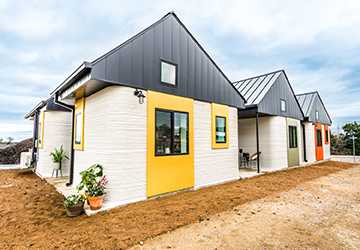Safeguarding Against Natural Disasters: Importance of Catastrophe Insurance
Understanding Catastrophe Insurance
Catastrophe insurance is a specialized type of coverage designed to shield your assets in the event of major natural disasters. This catastrophe insurance guide will help you grasp the significance of such insurance, the variety of disasters it encompasses, and how it can safeguard your property and financial stability.
Why Catastrophe Insurance is Essential
Coverage for Natural Disasters
Natural disasters can inflict substantial damage to homes, businesses, and other properties. Standard insurance policies frequently exclude the extensive damage caused by events such as earthquakes, floods, hurricanes, and wildfires. This is where natural disaster insurance becomes indispensable. It provides the essential coverage to repair or rebuild after a catastrophic event.

Protecting Your Assets
Without adequate insurance, recovering from a natural disaster can be financially devastating. Protecting assets from disasters is vital for sustaining financial security. Catastrophe insurance ensures that you are not left with overwhelming expenses after a disaster strikes.
Types of Natural Disasters Covered
Earthquakes
Earthquakes can cause colossal structural damage, and repairing this damage can be extremely costly. Natural disaster insurance typically includes coverage for earthquake damage, helping you rebuild without bearing the full financial burden.
Floods
Flood damage is another common exclusion in standard insurance policies. With catastrophe insurance, you obtain coverage for flood-related damages protecting assets from disaster.
Hurricanes and Tornadoes
Wind and water damage from hurricanes and tornadoes can be extensive. Catastrophe insurance provides coverage for these events, facilitating a quick and efficient recovery.
Wildfires
Wildfires can obliterate entire neighborhoods in a matter of hours. Natural disaster insurance ensures that you have the resources to rebuild and replace what you’ve lost.
Choosing the Right Catastrophe Insurance
Assess Your Risks
To choose the right catastrophe insurance, start by assessing the risks in your area. Different regions are susceptible to different types of natural disasters, so it's important to understand what you are most at risk for.
Compare Policies
Not all natural disaster insurance policies are identical. It's essential to compare the coverage, exclusions, and costs of different policies to find the best fit for your needs. Look for policies that offer comprehensive coverage for the specific disasters you are most likely to encounter.
Understand the Terms
Make sure you fully understand the terms and conditions of your catastrophe insurance policy. Know what is covered, what is excluded, and the process for filing a claim. This knowledge can save you time and stress if you ever need to utilize your insurance.
Benefits of Catastrophe Insurance
Financial Security
One of the primary benefits of catastrophe insurance is the financial security it provides. After a natural disaster, having the right insurance means you won't have to deplete your savings or incur debt to cover repair costs.
Peace of Mind
Knowing you are protected against major disasters gives you peace of mind. You can live and work without the constant anxiety of how you would recover financially from a natural disaster.
Quick Recovery
With natural disaster insurance, the process of rebuilding and recovering is much faster. Insurance payouts can help you get back on your feet quickly, minimizing the disruption to your life.
Key Considerations for Catastrophe Insurance
Deductibles and Premiums
When selecting a catastrophe insurance policy, consider the deductibles and premiums. Higher deductibles often result in lower premiums, but they also mean you will pay more out of pocket if a disaster occurs.
Policy Limits
Be cognizant of the policy limits, which is the maximum amount the insurance company will pay out for a claim. Ensure that these limits are sufficient to cover the potential costs of rebuilding and replacing your assets.
Additional Coverage Options
Some insurance providers offer additional coverage options that can be added to your natural disaster insurance policy protecting assets from disaster. These options can provide extra protection for specific items or additional living expenses if your home becomes uninhabitable.
Steps to Acquire Catastrophe Insurance
Research Insurance Providers
Commence by scrutinizing reputable insurance providers who specialize in catastrophe insurance. Assess their track records, customer testimonials, and financial robustness to ascertain they can fulfill their obligations in the eventuality of a disaster.
Consultation with an Insurance Agent
Engaging in a consultation with an insurance agent can yield invaluable insights into natural disaster insurance. They can elucidate the intricacies of various policies, coverage options, and guide you in selecting the most appropriate plan tailored to your specific needs.
Comprehensive Policy Review
Undertake a meticulous review of the policies offered. Seek comprehensive coverage that encompasses a broad spectrum of natural disasters. Ensure the policy terms align with your prerequisites and that there are no concealed exclusions that could jeopardize your claims.
Evaluate Policy Flexibility
Opt for a catastrophe insurance policy that offers adaptability. This entails the ability to adjust coverage limits and incorporate endorsements as your needs evolve. Flexibility ensures that your policy can acclimate to new risks as they emerge.
Enhancing Your Catastrophe Insurance Plan
Bundling Policies
Contemplate bundling your natural disaster insurance with other types of coverage, such as home and auto insurance. Bundling can often yield discounts and streamline the management of your insurance portfolio.

Adding Riders and Endorsements
Augment your catastrophe insurance by integrating riders or endorsements. These additions can provide supplementary protection for high-value items, additional living expenses, or specific disaster-related scenarios not encompassed by the standard policy.
Periodic Policy Reviews
Conduct regular reviews of your natural disaster insurance policy. This ensures that your coverage remains sufficient as your assets and risk factors evolve. Adjustments may be necessary to maintain optimal protection.
Government Support and Incentives
Government Subsidies
Investigate government subsidies that may be accessible for catastrophe insurance. Some regions proffer financial assistance to help residents afford indispensable insurance coverage.
Regulatory Frameworks
Understand the regulatory frameworks governing natural disaster insurance in your jurisdiction. These regulations can influence policy terms, claim procedures, and the overall cost of insurance.
Disaster Relief Programs
In addition to catastrophe insurance, familiarize yourself with government disaster relief programs. These programs can furnish supplementary support in the aftermath of a disaster, complementing your insurance coverage.
Conclusion
Investing in catastrophe insurance is a prudent decision for anyone looking to protect their assets from the devastating effects of natural disasters. This catastrophe insurance guide has illuminated the importance of having the right coverage, the types of disasters covered, and how to choose the best policy for your needs. By understanding and securing the appropriate natural disaster insurance, you can ensure that you are well-prepared to face any catastrophe that comes your way, thereby protecting assets from disasters and maintaining financial stability.


